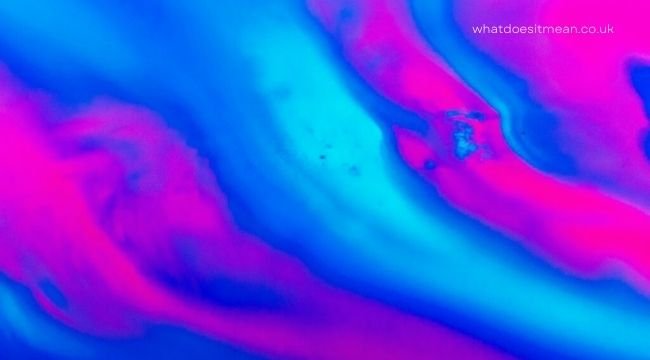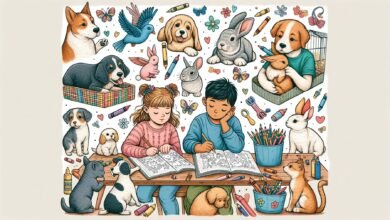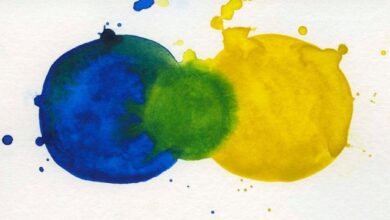
What does pink and blue make?
If you’re an artist or a designer, you’re probably aware that color can have a significant impact on the work you create. Experimentation and the mixing of two or more colors can help you broaden your horizons and produce new shades that would otherwise be impossible to come up with by themselves. In our effort to better understand color and how it interacts, we decided to take a closer look at the hues of blue and pink together. What hue do pink and blue combine to form? What does pink and blue make?
The following section will take a deep dive into the realm of color theory and blending to comprehend the outcomes completely. So come along with us as we uncover the mysteries of the colors pink and blue.
Pink and blue are the colors of choice in color theory
Firstly, we need to understand how these two hues exist on their own before we can consider how they mix.
We’re interested in learning about the components of these colors so that we can figure out why they behave the way they do. This is where the concept of color theory enters in.
Colors that are primary vs. secondary
According to the color wheel, blue is regarded as a primary color, while pink is considered secondary. But what exactly is the distinction?
How do you tell the difference between the two?
Primary colors can’t be formed by blending different hues of other colors in any way. They exist in their purest form and cannot be broken down into any other hues than white. So consider this: how would you go about creating blue? On the other hand, secondary colors are the polar opposite of primary colors.
It is always possible to tell what is contained within them because they are created by combining two distinct colors. In the instance of pink, it’s a combination of red and white.
As a result, both hues are regarded as primary since they are incapable of being decreased anymore.
Colors in the Tertiary Spectrum
So, what exactly occurs when you combine a primary and a secondary color?
A tertiary color is created as a result of this process. The term comes from the fact that we’re effectively blending three different hues rather than two to achieve the desired result. Despite the fact that pink and blue are the ingredients being mixed, it is essential to understand that pink is a consequence of two other colors.
Because of the profusion of color, those classified as tertiary are typically darker and deeper in tone than primary or secondary hues, and vice versa.
Knowing this, we can immediately predict that the outcome of our experiment with blue and pink will be the same as the original.
Colors that are warm against cool colors
Other than the fact that they are on opposing sides of the color wheel, there is no distinction between our two items. Warm hues are those that capture the sensation and intensity of heat, such as those emitted by a fire or by sunshine.
As a result, the colors orange, red, and yellow serve as excellent examples. Because pink has a red undertone, we might also consider it a warm color because of its basis. On the other hand, blue is considered to be a chilly hue. Consider the elements of ice, water, and cold sensations. Green and purple are two more colors that are considered cool.
This color palette is more relaxing when contrasted to the brightness of the colors on the opposite side of the spectrum, which is particularly noticeable.
What does pink and blue make?
What happens when we combine our two colors, now that we’ve learned the fundamentals of each? For example, what tertiary color is produced when the colors pink and blue are combined?
The straightforward response to this question is purple. However, due to the nature of the hue pink, the intensity of the color might change depending on the situation.
Purple is a secondary hue in and of itself, as it is a result of the reactions between red and blue. As a result of some white in pink, we will see a range of colors. Lavender and magenta are two colors that appear on the brighter end of the spectrum.
The product might seem more plum or mauve on the darker side of the spectrum. However, because there are only three primary colors involved (red, white, and blue), you have the freedom to experiment with different combinations to get the perfect hue for your purposes.
Adding a little additional red to your pink may transform it into a darker, maroon-like shade. Making it appear like a dark purple by putting blue in the foreground of your design might offer some richness and texture to your item. However, we strongly advise you to experiment with different color combinations in order to achieve the best results.
Purple as a Design Color
You’ve determined the appropriate color, but what are your plans for utilizing it? What type of project are you now engaged in? Here are a few things to keep in mind when considering how you may use your favorite purple color.
Depending on how light or dark the shade is, it may be used in a variety of different applications. For example, deep purple conjures up images of grandeur and wealth (think of the Crown Royal), but lighter tones might conjure up images of nature (lilacs and other flowers).
Purple may also act as a transitional color between warm and cold tones. Because it’s made up of two colors, you may use more of one or the other to push it to one side if you want it to. Consequently, purple is a flexible and lively hue that will provide authenticity and style to every project it is used in.
Conclusion
Thank you for visiting us today, and we hope you make good use of the knowledge you have received. When it comes to figuring out what does blue and pink make, we want you to experiment and push the boundaries of what’s physically feasible.



